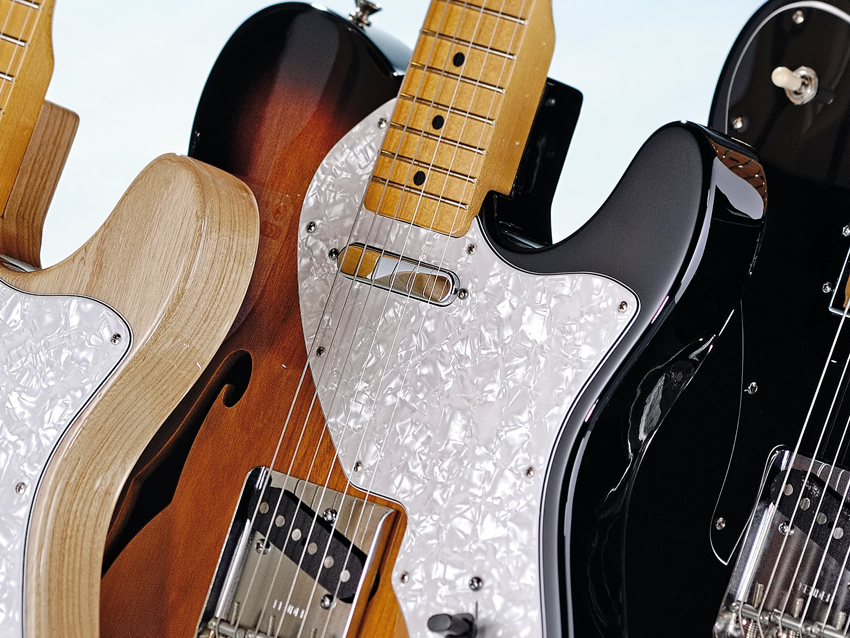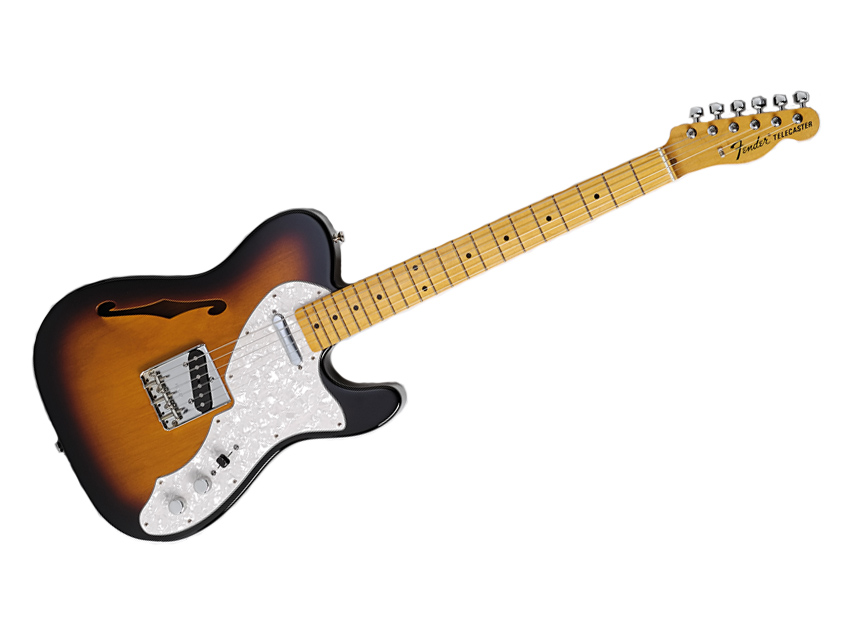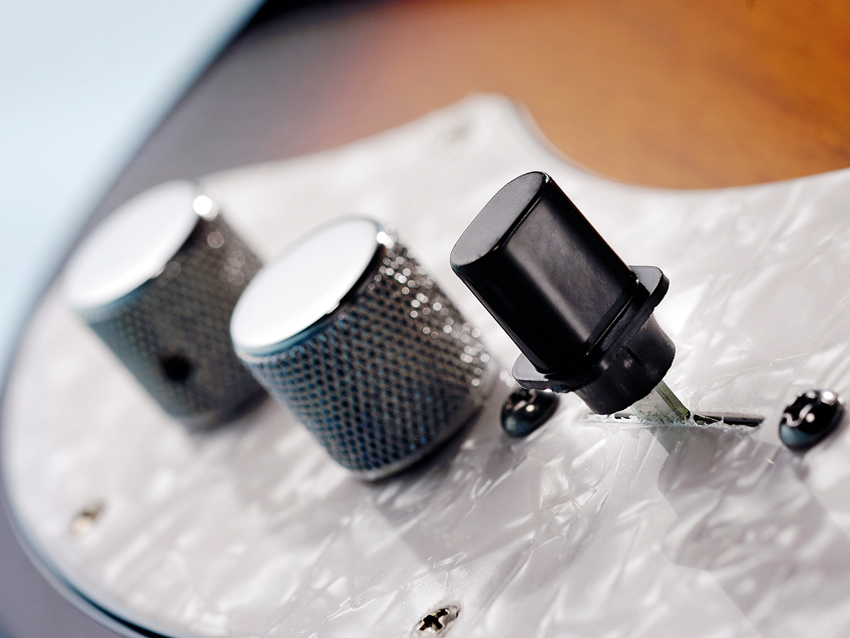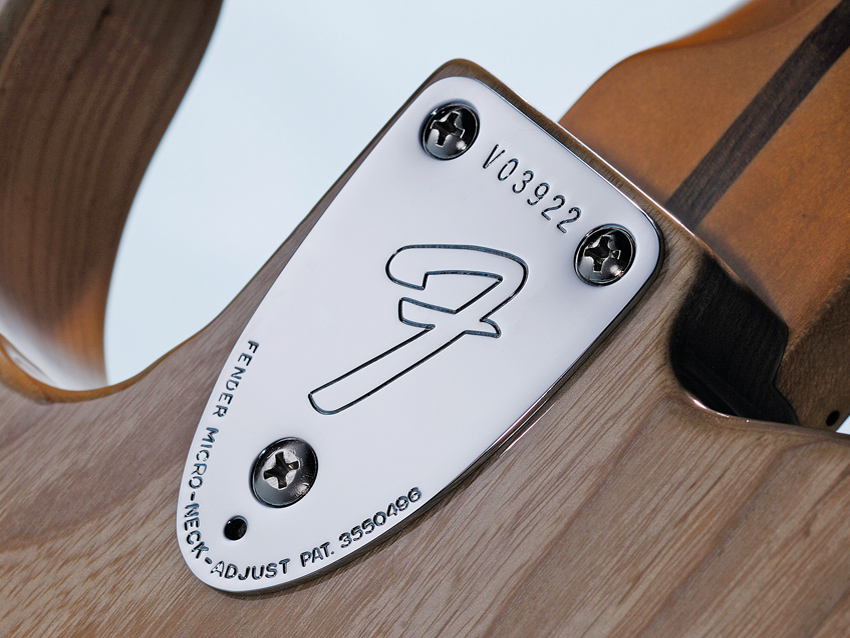MusicRadar Verdict
The best-yet production version of a now-classic Tele, with excellent vintage detail and sounds.
Pros
- +
Good build. Light weight. Vintage tonality. Versatility. Looks great.
Cons
- -
Small fretwire/fingerboard radius may impede playability. Lack of colour options.
MusicRadar's got your back

Fender American Vintage '69 Telecaster Thinline

Fender American Vintage '69 Telecaster Thinline

Fender American Vintage '69 Telecaster Thinline

Fender American Vintage '69 Telecaster Thinline
Fender's American Vintage series is the closest you can get to a vintage Fender guitar without buying the real thing from yesteryear or moving into the more elite Custom Shop.
This new addition - along with the American Vintage '72 Thinline and Custom Teles - is already available in lower-cost Fender ranges, but not at this quality or with this much vintage detail.
"One reason why the Telecaster has survived is that it has graced every genre from country, jazz and blues through to modern rock and metal."
The '69 Telecaster Thinline, aims to replicate the original Thinline, which appeared in 1968 and lasted until 1971.
Classed by Fender at the time as a 'semi-acoustic' it was offered initially with just mahogany or ash bodies with a natural finish. Semi-hollow construction aside, it retained the Tele's dual single-coils and master volume/master tone control layout.
Build
The historians tell us that the Thinline concept came about in an attempt to reduce the weight of the Telecaster.
Here the solid slab body is machined from the back leaving a centre section that stops just after the end of the bridge surrounded by hollow 'wings'. A back is then added and a single f-hole cut on the top's bass side.
This lightweight American Vintage version uses mahogany for the body - there's no ash version - and we get either the two-colour burst or Olympic white, which is £72 cheaper. For a guitar that retails not too far short of £2k, it seems a miserly colour choice reinforced by a complete lack of options.
Want all the hottest music and gear news, reviews, deals, features and more, direct to your inbox? Sign up here.
The body and neck finish on all these models is 'gloss lacquer' (aka nitro-cellulose) applied to a high standard, although on this sample there's a light patch around the f-hole and a splodge of darker colour on the inside of the soundhole making things a little untidy.
An original '69 Thinline would have been finished in polyester so, strictly speaking, this finish is inaccurate but few will have a problem.
According to Fender's Neil Whitcher: "The finish is a more modern nitro-cellulose lacquer with a poly undercoat; we felt that this would be a tonally superior option to go with for the guitars."
The guitar features an all maple one-piece neck/fingerboard with a rear skunk stripe, and uses a body-end truss rod adjustment and the classic four screws and rectangular neck plate neck-to- body join.
The 21-fret face is clearly lightly finished in a slightly orange-toned gloss. We get the original small fingerboard radius, small frets and a modern 'C' profile that most players should feel comfortable with.
It also sports 'F' logo tuners, with their distinct squared off buttons, and a single butterfly string tree that increases the string angle behind the nicely cut synthetic bone nut. It's nicely done but that gloss finish does look and feel a little bit cheap, and rather sticky, too.
Spec'd with two American Vintage single-coils, one meg ohm volume and tone pots and the ubiquitous three-way lever pickup selector, it's period correct business as usual save, of course, for that scratchplate, which holds all the electronic components plus the neck pickup.
As usual the output jack is side-mounted and, of course, the bridge pickup is mounted in an old-style Tele bridge plate with three steel saddles.
Sounds
One reason why the Telecaster has survived all these years is that it has graced pretty much every genre from country, jazz and blues through to modern mainstream rock and metal.
It's not always an easy ride: some swear by the bridge pickup (and swear at the neck pickup), others find an endless soul and funk groove from that middle, hollowed mix. There are even a few of us that actually like the neck single-coil for its smooth, jazz-edged voice.
On the '69 Thinline platform, and compared to an original solidbody '69 Tele, we have a different flavour. There's immediately less mid-range solidness to the sound, which makes that bridge pickup even spikier; conversely both the middle mix and neck pickup sound wider and fuller.
Definitely more hollowbody sounding, it's a step towards, perhaps, a P-90-style ES-330, with of course more Tele-like spike and Fender-ness.
This guitar was originally conceived at a time when Fender began to lose its way. However, 40 years on the guitar has been elevated into Fender's top drawer, thanks to numerous often left-field players who wanted a piece of 'vintage' Fender but simply couldn't afford the high-value classics.
Although this guitar has been available for some time in both Mexican- and Japanese-made guises, this American Vintage guitar improves on both those and the original, with its lightweight build and lacquer finishes.
Features such as the three-bolt neck joint and bullet truss rod adjusters (when done properly) make a lot of sense, too. The small frets and fingerboard radius, not to mention the paltry colour choice, won't endear it to all, but with street prices already around £1.5k, this updated blast from the past remains a powerful draw.
Dave Burrluck is one of the world’s most experienced guitar journalists, who started writing back in the '80s for International Musician and Recording World, co-founded The Guitar Magazine and has been the Gear Reviews Editor of Guitarist magazine for the past two decades. Along the way, Dave has been the sole author of The PRS Guitar Book and The Player's Guide to Guitar Maintenance as well as contributing to numerous other books on the electric guitar. Dave is an active gigging and recording musician and still finds time to make, repair and mod guitars, not least for Guitarist’s The Mod Squad.
